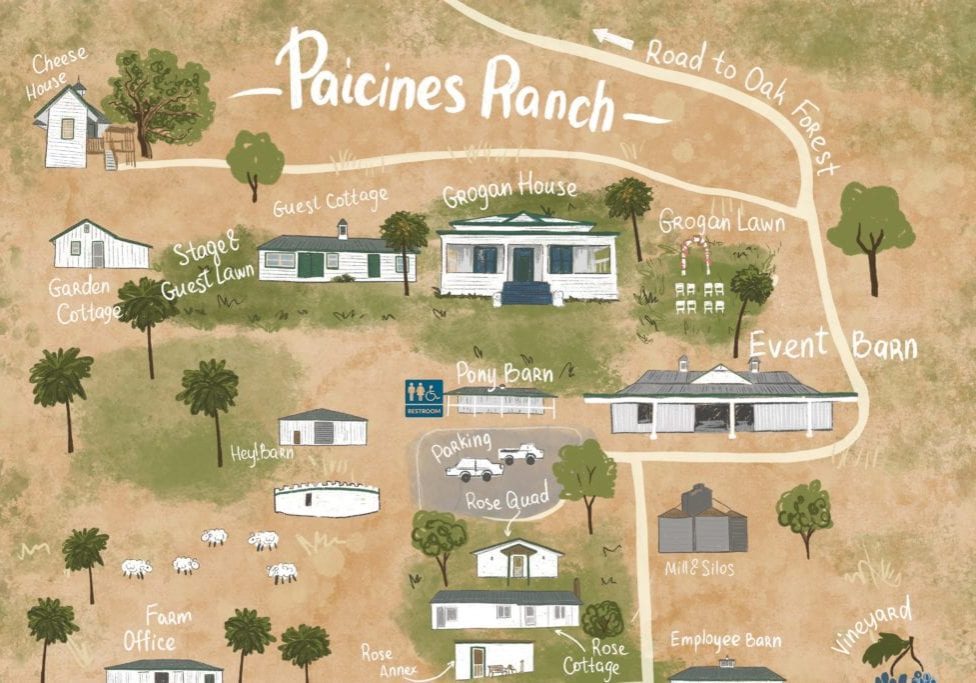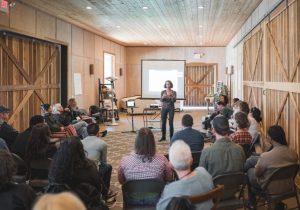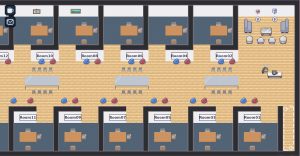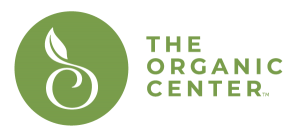Dorn Cox, Ph.D., research director, Wolfe’s Neck Center for Agriculture and the Environment
Mike Komp, spatial technologies program manager, Noble Research Institute, LLC
Dennis Buckmaster, Ph.D., professor of agricultural and biological engineering, Purdue University
Ag technology is at an exciting crossroads. Demand to improve our global agricultural systems has drawn focus from venture capitalists who recognize the time is ripe for innovation in agricultural information technology, which has revolutionized so many other sectors.
The 2018 Gathering for Open Agricultural Technology (GOAT) event in Rhinebeck, New York, launched a new approach to problem-solving and collaborative research and development. The invited attendees represented more than 70 open agricultural tools and a mapped technical ecosystem. GOAT represents the technical community and working groups to not only provide strategic technical insight into tool development but also link in with global open-data efforts such as Global Open Data for Agriculture and Nutrition.
The GOAT community organized 22 working sessions during three days that resulted in six actively emerging “hotspots:”
- Sensing and control: hardware, remote sensing, Internet of Things sensors and robotics.
- Strategies for scaling open-source agriculture technology support and manufacturing.
- Innovations in crop planning, sales and marketing software.
- Interoperability of products, data standards, data content, and data and cultural practices.
- Communication of environmental performance: blockchain applications, verification and measurement.
- Community and values: food culture, food security, data access, teaching and learning.
As participating organizations, we wanted to share some of our perspectives.
Interoperability: Interoperable data for agricultural products, and activity tracking and decision-making is a genuine need and significant challenge.
Interoperability can eliminate the need to re-enter data into multiple systems, align data based on geo-references or time stamps, and fully contextualize product information and machine or worker activities. Potentially the largest gain will be to enable machine learning and optimized systems because of a data infrastructure that makes new algorithms and artificial intelligence possible. Interoperable data can also facilitate agricultural work as we move across lands, brands, enterprises, firms and stakeholders. Open solutions that build the behind-the-scenes infrastructure will be much more effective because of the complexities involved in aspects of firms and technology.
Many existing decision support tools operate in isolation from each other, and data interoperability is not a goal as these tools are developed. Adoption of open data and technology standards by technology developers could lead to more useful application program interfaces (APIs), integrated solutions, and ultimately the ability for farmers and ranchers to use data from many sources cohesively. Similar efforts have attempted this in the past and all have failed. However, with new technologies that allow for agile development of solutions, now may be the time when this could succeed.
While there is great promise, interoperability problems from walled-garden-type software and agriculture data remain. Most farm management platforms cannot interact with each other in meaningful ways. Data gathered via remote sensing are rarely used in concert with information gathered on the ground — especially data collected by farmers themselves for their own operations. There is no standard agricultural data structure that drives the ability to exchange information as there is in the medical industry. This severely limits farmers’ and ranchers’ ability to use information and technology in powerful ways and realize the benefits of the data they already collect and control.
Open-Source Development: During the past few years, we have operated our research and innovation group with an open-source approach and have found that collaborative culture and peer coaching spawn rapid and effective innovation. Online collaboration tools improve communication and enable fewer meetings. The team approach builds critical work-style skills for those involved and also extends the reach of each participant as they have a better appreciation of individual contributions to efforts that could never be accomplished alone. Indeed, innovation requires a suitable ecosystem.
A key to the success of these standards is the ability to demonstrate the value of participation to technology developers. Moving toward a standard set of API protocols would allow for integrated solutions and more adoption of original data products that are difficult to sell individually. This requires relationship cultivation to understand how technologies leveraged together could enhance the value of individual data products. For example, many remote sensing and in-field sensors exist to provide individual pieces of data (i.e., soil moisture, normalized difference vegetation index (NDVI), percent bare ground, forage biomass, thermal properties), but these solutions do not converge in ways that provide the big picture in an actionable way to farmers and ranchers.
The challenge in doing this revolves around making the business case for all involved parties: farmers, ranchers, technology developers, hardware manufacturers and society. The best solutions will involve common ground among all these parties and move forward while still addressing the big-picture issues that face agriculture, such as land stewardship and soil health.
A key benefit of open-source development is the better education and training of the incoming digital workforce. Rapid innovation requires knowledge in the application area, a skill set rooted in collaboration and adequate knowledge regarding an appropriate tech stack; actual collaboration is required to advance these in concert. Most times, that collaboration requires long-distance relationships.
Agricultural producers and technologists will increasingly need to learn to work collaboratively to create solutions. Event presenters also freely shared different hardware and software solutions to specific tasks and decisions. Even with skilled participants, everyone learned something from others who tackled issues in a novel manner.
The event was supported by countless open-source software projects, such as the Discourse website (goatech.org) and forum, which enabled collaborative, thorough documentation of key developments and ideas. Introductions led to conversations, which soon grew to relationships. It is clear that goatech.org will facilitate genuine collaboration needed to rapidly advance in areas of sensing and control, software for agriculture, data and interoperability, and communicating environmental performance.
Decision Tools for Agriculture
We see the opportunity to build an open architecture for agricultural technology that will help the next generation of agricultural producers to be empowered by research and innovation. When looking at the technology ecosystem the event participants brought to the table, it’s obvious that solutions to move toward more integrated decision support tools already exist.
We feel it is necessary to support innovation at all scales and support diverse operations that can scale globally and democratize access to tools. This event was a step to unlock the technical revolutions that are lowering the economies of scale in communication, analytics and observation technology, and delivering access to markets and improved market efficiency through lower automation costs at all scales. We feel the next agricultural revolution will be knowledge-intensive. We see the potential for a technology ecosystem that can build the underlying tools used by Midwest row crop producers; farmers and ranchers; landowners; urban market gardeners; and developing-world, small-holder producers.
Disruptive technologies like Internet of Things, drones, blockchain, machine learning and artificial intelligence represent a powerful toolbox that will revolutionize and democratize access to knowledge about our food systems. How we use these new technologies together to improve agriculture will define generations to come.
Could open-source, community-driven initiatives be the solution? We think so. We anticipate countless outcomes from this event, in the areas of activity and technology coordination, and community cohesion. For community cohesion, the forum remains active and open to the public for access and contribution. There is a plan to continue connections via monthly webinars and perhaps regional meet-ups that might align with conferences, trade shows, hack-a-thons, etc. For technology coordination, there is anticipated collaboration and cooperation toward interoperability, knowledge and data sharing, and most certainly code-base and “stack” sharing. The coordination of technology aligns with activity coordination to improve information flow and reduce duplication of effort.
The GOAT 2019 dates and location will be announced in early 2019, and readers are encouraged to apply.
About Each Organization
Wolfe’s Neck Center for Agriculture and the Environment is currently focused on developing cover crop and grazing management decision tools based on soil health and forage analysis using a combination of management data and high-resolution analysis of Internet of Things environmental sensor data and remote sensing analysis.
Noble Research Institute, LLC (www.noble.org) is an independent nonprofit agricultural research organization dedicated to delivering solutions to great agricultural challenges. Headquartered in Ardmore, Oklahoma, the Noble Research Institute conducts fundamental, translational and applied research; offers no-cost consultation and education to farmers, ranchers and land managers; operates seven research and demonstration farms; and educates students of all ages about science and agriculture. The Noble Research Institute was founded by Lloyd Noble, an Oklahoma oilman and philanthropist, in 1945 as The Samuel Roberts Noble Foundation to advance agriculture and land stewardship.
Purdue University’s Open Ag Technologies and Systems (OATS) Group is working in the technical landscape and innovation area, but broad involvement by stakeholders including original equipment manufacturers, agricultural producers, landowners, service and product suppliers, logistics firms, processors, and even consumers will be required











